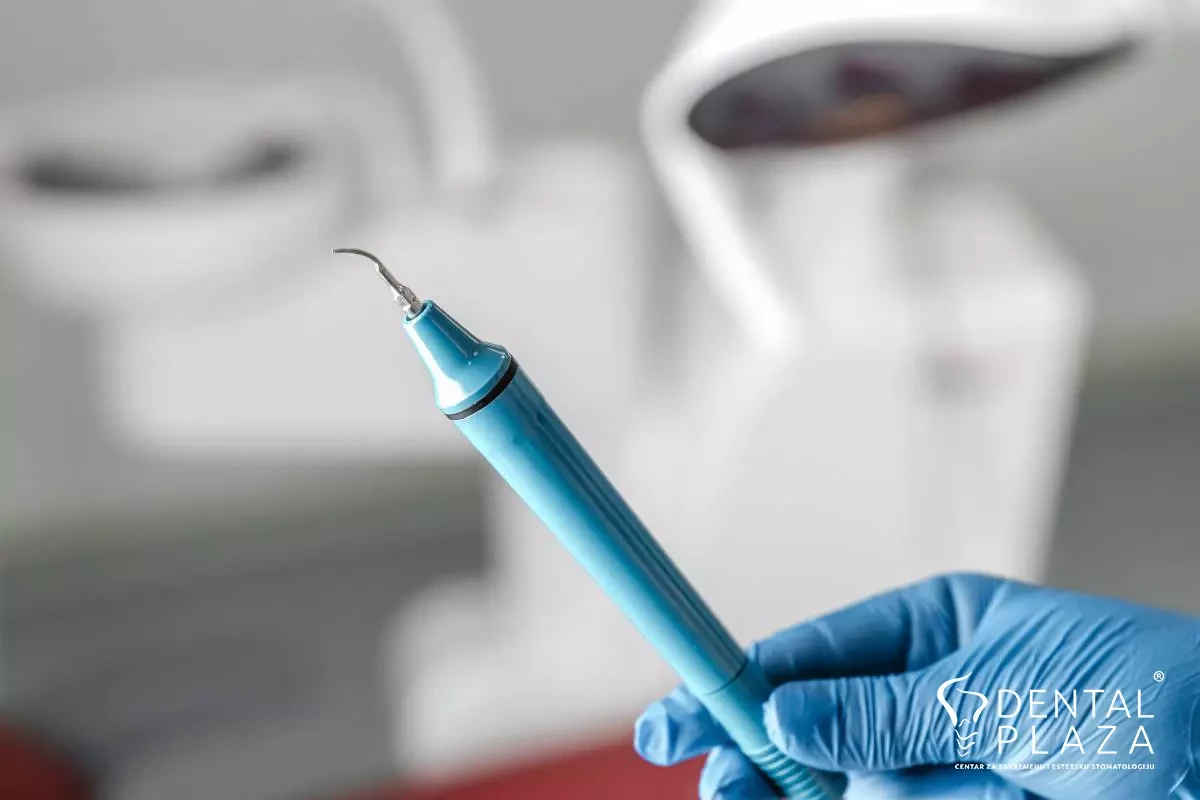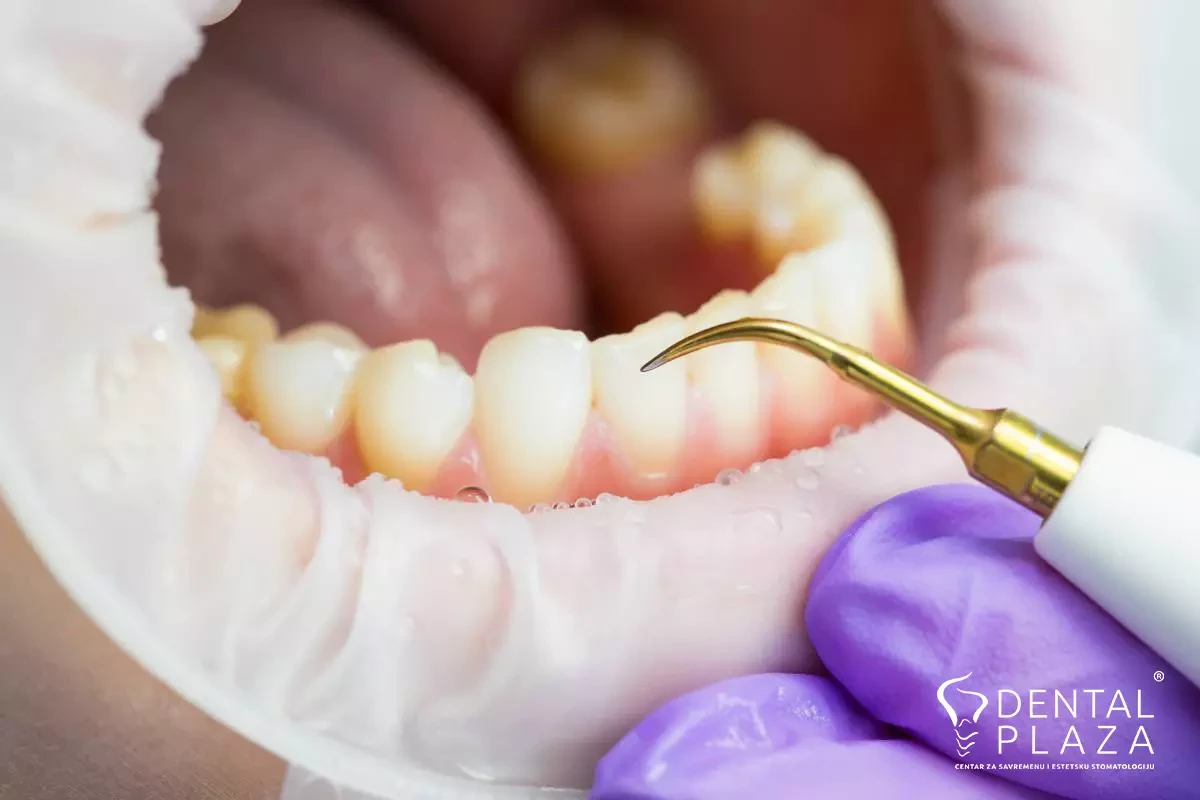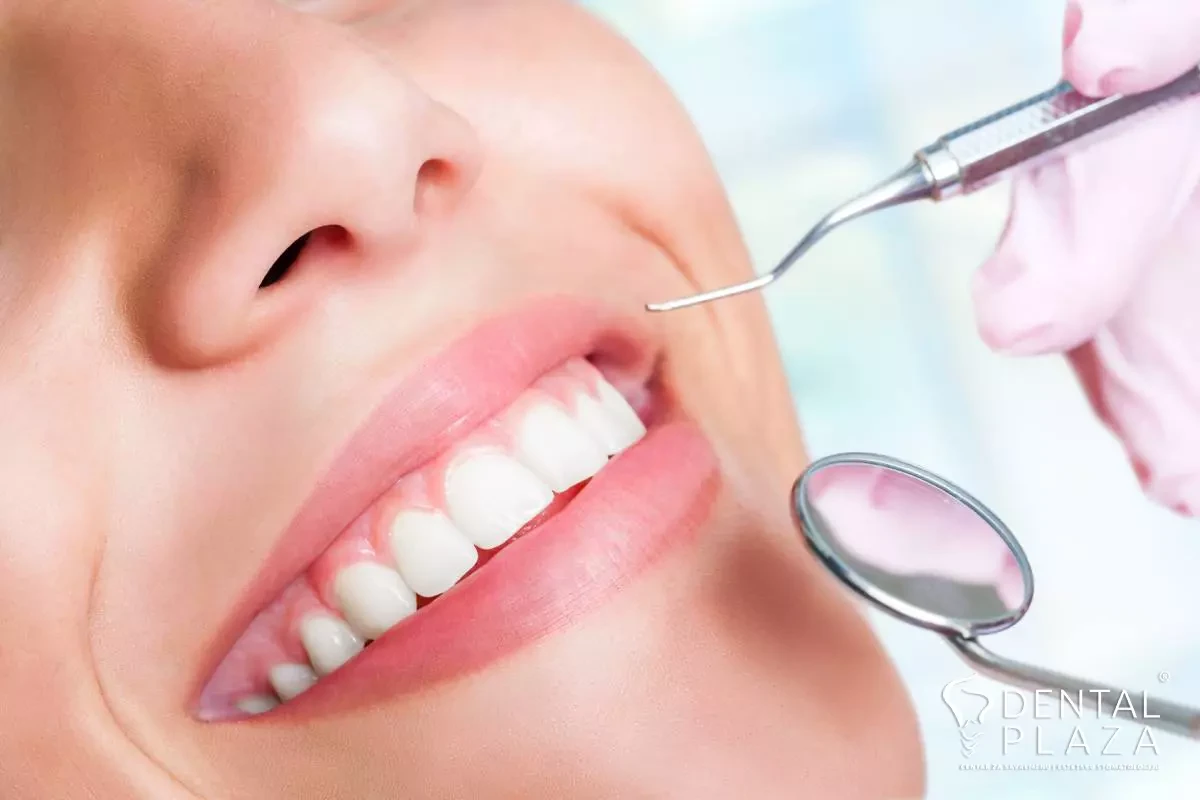Do not be shy, show your teeth!
Call Center 08-21h
Do not be shy, show your teeth!
Call Center 08-21h

Gingivitis is an inflammation of the gums that most often occurs due to the presence of dental plaque bacteria. If the infection progresses, it can be transferred to the alveolar bone and lead to periodontal disease. Gingivitis is a reversible disease, which means that with good oral hygiene, gum inflammation can be eliminated. If left untreated, the inflammation can lead to bone loss, and if it persists, to tooth loss.
Inflammation of the gums is most often the result of poor oral hygiene. As a result, dental plaque is formed, which is full of bacteria that damage tooth enamel. They cause caries and the body's immune response. In this process, gum tissue is destroyed, which can further lead to periodontopathy. In addition to poor oral hygiene, additional factors that can lead to gum inflammation are smoking, lack of vitamins and minerals, diabetes, hormonal changes (puberty, menopause, pregnancy, menstruation), stress, and genetic predisposition. Gingivitis caused by plaque occurs in almost 80% of people.

Additional risk factors that can favor the occurrence of gingivitis are: age, osteoporosis, mouth breathing during sleep, various medications and systemic diseases that lead to dry mouth and reduced saliva secretion, cigarettes, diabetes, genetic factors…
If gingivitis occurs, certain changes occur in the gums themselves. There are several characteristic symptoms that may indicate the existence of gingivitis, ie. inflammation of the gums:
Additionally, the fine-grained structure of the gums that normally exists in healthy gums is often lost if there is gingivitis, and the gums become smooth and shiny due to swelling. These gums are very sensitive and you can notice bleeding and pain most easily during daily brushing.
In the treatment of gingivitis, the so-called causal phase of therapy is applied. This includes cleaning of soft and hard dental deposits. This process removes the cause of inflammation of the gums, after which, with adequate maintenance of hygiene, the process calms down. The dentist will train you on proper oral hygiene with the use of soft toothbrushes and interdental brushes. If you apply the advice in the correct way and come for regular check-ups at the dentist, the gums will be healthy.
It is important to emphasize that gum inflammation (gingivitis) can be easily prevented. This means brushing your teeth every day. In addition, interdental brushes and floss can be used, which will raise hygiene to an even better level.

To maintain adequate and good oral hygiene, the use of soft toothbrushes is recommended. These brushes are soft and gentle on the gums, so they won't hurt them, and at the same time, they are effective enough to completely remove dental plaque. A toothbrush is the primary and main tool for maintaining oral hygiene, while toothpaste is an auxiliary tool. There are various toothpastes on the market today and some of them contain substances that have a beneficial effect on the gums.
Certainly, the choice of paste in the treatment of gingivitis is less important. Of greatest importance is the technique of brushing teeth and regular maintenance. In our practice, you can always get advice on the proper maintenance of oral hygiene. If you follow this and all the advice given by your dentist, the occurrence of gingivitis can be prevented or completely eliminated, if it is reacted in time.

Do you have questions?

Gingivitis is an inflammation of the gums that most often occurs due to the presence of dental plaque bacteria. If the infection progresses, it can be transferred to the alveolar bone and lead to periodontal disease. Gingivitis is a reversible disease, which means that with good oral hygiene, gum inflammation can be eliminated. If left untreated, the inflammation can lead to bone loss, and if it persists, to tooth loss.
Inflammation of the gums is most often the result of poor oral hygiene. As a result, dental plaque is formed, which is full of bacteria that damage tooth enamel. They cause caries and the body's immune response. In this process, gum tissue is destroyed, which can further lead to periodontopathy. In addition to poor oral hygiene, additional factors that can lead to gum inflammation are smoking, lack of vitamins and minerals, diabetes, hormonal changes (puberty, menopause, pregnancy, menstruation), stress, and genetic predisposition. Gingivitis caused by plaque occurs in almost 80% of people.

Additional risk factors that can favor the occurrence of gingivitis are: age, osteoporosis, mouth breathing during sleep, various medications and systemic diseases that lead to dry mouth and reduced saliva secretion, cigarettes, diabetes, genetic factors…
If gingivitis occurs, certain changes occur in the gums themselves. There are several characteristic symptoms that may indicate the existence of gingivitis, ie. inflammation of the gums:
Additionally, the fine-grained structure of the gums that normally exists in healthy gums is often lost if there is gingivitis, and the gums become smooth and shiny due to swelling. These gums are very sensitive and you can notice bleeding and pain most easily during daily brushing.
In the treatment of gingivitis, the so-called causal phase of therapy is applied. This includes cleaning of soft and hard dental deposits. This process removes the cause of inflammation of the gums, after which, with adequate maintenance of hygiene, the process calms down. The dentist will train you on proper oral hygiene with the use of soft toothbrushes and interdental brushes. If you apply the advice in the correct way and come for regular check-ups at the dentist, the gums will be healthy.
It is important to emphasize that gum inflammation (gingivitis) can be easily prevented. This means brushing your teeth every day. In addition, interdental brushes and floss can be used, which will raise hygiene to an even better level.

To maintain adequate and good oral hygiene, the use of soft toothbrushes is recommended. These brushes are soft and gentle on the gums, so they won't hurt them, and at the same time, they are effective enough to completely remove dental plaque. A toothbrush is the primary and main tool for maintaining oral hygiene, while toothpaste is an auxiliary tool. There are various toothpastes on the market today and some of them contain substances that have a beneficial effect on the gums.
Certainly, the choice of paste in the treatment of gingivitis is less important. Of greatest importance is the technique of brushing teeth and regular maintenance. In our practice, you can always get advice on the proper maintenance of oral hygiene. If you follow this and all the advice given by your dentist, the occurrence of gingivitis can be prevented or completely eliminated, if it is reacted in time.
